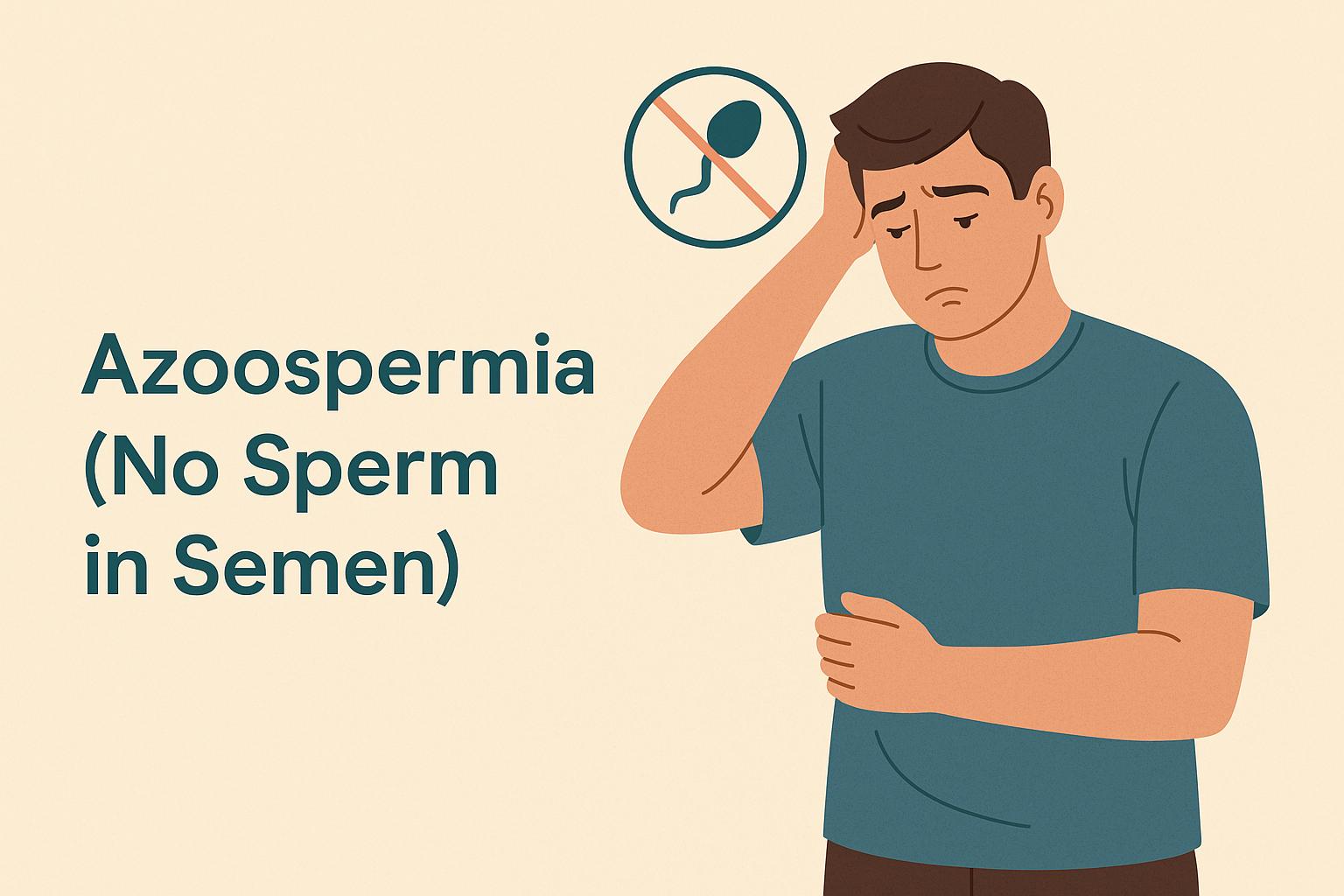Getting a fertility diagnosis that affects your ability to conceive naturally can shake you to the core. This condition affects approximately 1% of men and shows up in 10-15% of couples with infertility problems. Though the diagnosis might seem like the ultimate impossible thing, many men with this condition could still have biological children through various treatment methods. The key is understanding what’s causing Azoospermia and taking action based on your specific situation.
Here’s what you need to know about Azoospermia and the way ahead.
What exactly is Azoospermia?
Azoospermia means the absence of sperm in a man’s ejaculate. Your body still produces semen, but it contains no sperm cells. This differs from low sperm count, where some sperm are present but in reduced numbers.
The majority of men find out about this condition only when they fail to conceive. There aren’t usually obvious symptoms unless the underlying cause creates other issues. You may find a lump in the case of a blockage, or a hormonal imbalance may cause a low sex drive. But typically, everything feels normal until that test result comes back.
The condition comes in two forms, obstructive and non-obstructive. Obstructive type refers to your testicles that have no problems producing sperm, but there is a blockage that stops it from getting to your semen. The non-obstructive type implies that production of sperm has slowed down or even ceased. Your treatment options depend entirely on which type you have.
What causes zero sperm count?
Causes of azoospermia vary widely, and pinpointing yours is the first step toward finding the right treatment.
Obstructive causes
Physical blockages create obstructive cases.
- Vasectomy or failed vasectomy reversal
- Previous infections can also cause obstruction.
- Congenital bilateral absence of vas differences (CBAVD)
- Some men are born without the vas deferens on one or both sides, particularly those who carry cystic fibrosis genes.
- Cysts or growths blocking the way.
Non-obstructive causes
Numerous non-obstructive cases are due to genetic and other conditions:
- Genetic conditions like Klinefelter syndrome give an additional X chromosome to men.
- Hormonal imbalances prevent proper sperm production.
- Y chromosome deletions eliminate genes necessary for producing sperm.
- Chemotherapy and radiation damage sperm production.
- Testosterone supplements, ironically, stop natural sperm creation.
- Heavy drug or alcohol use takes its toll, and regular exposure to pesticides or industrial chemicals also harms fertility.
- Testicular problems like undescended testicles during childhood create issues later.
- Varicocele, the enlarged veins in the scrotum, overheat the areas and reduce production.
How do doctors diagnose this condition?
The Azoospermia treatment starts with an in-depth analysis of semen. A specialist will examine your sample under a microscope after centrifuging it to focus on any cells present.
In case the test shows that there are no sperm in semen, your doctor will carry out additional tests. Testicular examination and observation of your reproductive organs will identify apparent problems. Additionally, blood tests monitor the hormone levels, while genetic tests are done to determine chromosomal issues. Moreover, scrotal ultrasound is done to detect blockages or varicose veins. A testicular biopsy is done to determine if sperm production is happening.
These tests help identify the presence of an obstructive or non-obstructive type, and this is a total game-changer in terms of your treatment choices.
What treatment options are available?
Azoospermia treatment depends entirely on what’s causing your condition.
1. For obstructive azoospermia
In the case of blockages, surgical solutions usually prove to be effective. Doctors can carry out surgery to reconnect or bypass blocked tubes. This is where vasectomy reversal can fall, when your zero sperm count has resulted in your zero sperm count. If surgery isn’t suitable, sperm retrieval techniques become your next option.
2. For non-obstructive azoospermia
This type presents more challenges, but solutions still exist. Hormone therapy might help if imbalances are affecting sperm production. Some men respond well to medications that boost hormone levels. Varicocele repair can improve sperm production in some cases where enlarged veins are contributing to the problem.
Once sperm has been retrieved through any method, IVF with ICSI becomes possible. This process includes injecting a single sperm directly into an egg, maximising your chances of conception.
Conclusion
Having azoospermia doesn’t mean you have lost your hopes of becoming a father. With medical advancement, thousands of men have had the opportunity to have biological children regardless of this diagnosis. The first step you need to take is to have the correct diagnosis and learn about your particular type of azoospermia. A lot of men who were believed to have no sperm have gone ahead to be fathers in modern fertility procedures.
Do not let this diagnosis prevent you from seeking answers and checking out your options. The Male Fertility Clinic is a specialised clinic that focuses on diagnosing and treating complicated male fertility challenges, such as azoospermia. Their team works with you to explore every possible avenue for treatment. So, contact the experts today!


